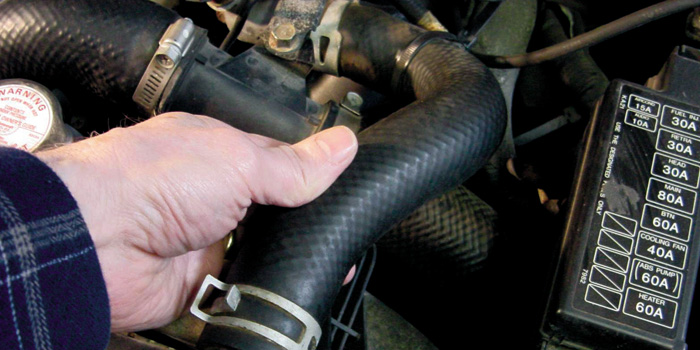
Modern coolants, in their many colors and compositions, have helped extend the service intervals and replacement schedules of cooling system components. Driven in part by the OEMs longer powertrain warranty, many components are engineered to last beyond this “magic number,” sometimes up to 100,000 miles.
While these warranties offer a sense of security, reliability, and low cost of ownership, it also gives some owners a feeling of invincibility. Regular maintenance items that are neglected or overlooked may lead to “sudden” failures of expensive components, which may not actually be covered under warranty, depending on the cause.
In the case of cooling system components, this leads to overheating and possible engine or transmission damage.
Extended Life Coolants
Extended life (EL) coolants have specific chemistries that provide advantages for their given applications. Regardless of brand name or source, the parts specialist should recommend using a coolant that meets the particular OEM standard for the customer’s vehicle. This sometimes requires upselling the customer to a more expensive coolant, or even referring them to a dealer if you are unable to provide a suitable replacement.
If you stock a “universal” coolant, refer to the packaging or spec sheet to ensure compatibility with the coolant being replaced. Remember that adding a standard green ethylene glycol coolant to an extended life coolant will shorten the lifespan of the EL coolant, and may not provide adequate corrosion protection for cooling system components.
Hoses
In addition to checking and maintaining proper coolant levels, coolant hoses should be inspected periodically. Hoses are constantly exposed to temperature extremes, as well as a host of underhood chemicals. Look for leaks, physical damage and swelling or softness. These are the obvious signs of distress, although the most common hose failures begin internally. As coolant ages, it becomes more acidic, attacking metal and rubber components, causing accelerated corrosion.
An electrochemical reaction between the coolant and the various metals in the cooling system, along with the flow of high-temperature coolant, can cause the hose’s inner liner to break down, wear away, and even shed small bits of material into the coolant.
Modern EPDM rubber hose materials help combat this degradation, but a thorough inspection of coolant hoses is still advisable, especially when replacing major components like water pumps and radiators. Be sure to also recommend any associated bypass or heater hoses, since they are exposed to the same environmental and coolant exposures.
Replacement Radiators
Brass and copper were once widely used materials for automotive radiators. These vintage radiators are heavy, bulky and often expensive to replace. Aluminum and plastic are the preferred materials today, saving the manufacturer cost, size and weight. One drawback, however, is that the plastic tank and the aluminum core are connected mechanically rather than being soldered or brazed like copper and brass.
Flange failure and splitting are common at these seams, resulting in leaks. On the plus side, aluminum dissipates heat better than copper, so a modern aluminum radiator can be smaller in height, width and thickness, while still providing superior cooling. Some catalog applications will specify a particular number of rows of cooling tubes for standard or heavy-duty cooling options. Be aware that when replacing an older copper/brass radiator, a single row of tubes on an aluminum unit may be as thick as two conventional rows, and the replacement unit may even be thinner than the stock unit, because of differences in material efficiency.
On the other hand, core measurements of width and height can be critical for correct fitment, mounting and cooling capacity. Aside from differences in physical dimensions, it is common for the radiator also to house an engine oil or transmission fluid cooler, sometimes both. Proper selection of these options is critical for correct fitment. If you do not offer a radiator for a particular application, most repairs or re-coring can be handled by radiator specialty shops, if you have one locally. Many quality radiators already come pre-packed with the appropriate fittings or adapters for connecting fluid lines to these internal coolers, but other items like coolant level or temperature sensors will need to be transferred from the old radiator or replaced.
If the radiator does not come with a new pressure cap, or if the vehicle uses a pressurized recovery bottle, recommend a new cap along with your other add-on sales items such as hoses, clamps and the appropriate coolant.








